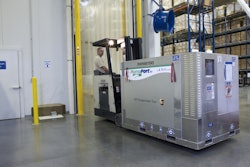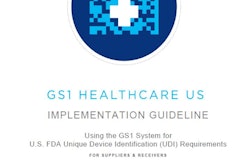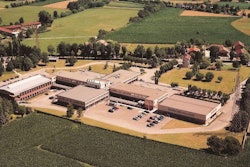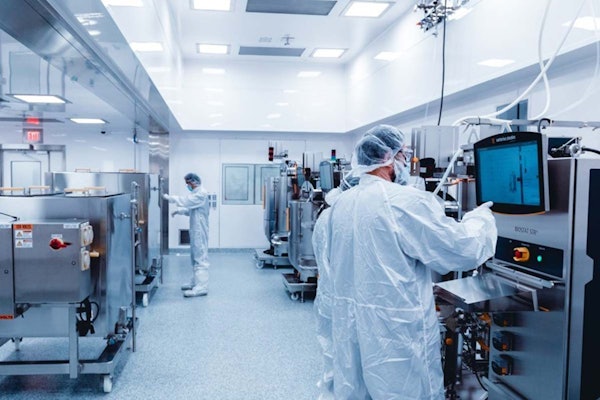HCP: Tell us about DHL.
Orfanos: DHL is part of the world’s leading mail and logistics group, Deutsche Post DHL (dpdhl.com). The Group provides customers with easy-to-use standardized products as well as innovative and tailored solutions ranging from dialog marketing to industrial supply chains. About 480,000 employees in more than 220 countries and territories form a global network focused on service, quality, and sustainability.
The DHL part of the business comprises DHL Express, our global express parcel business, DHL Global Forwarding Freight and DHL Supply Chain, which in the U.S. operates under the Excel brand name.
HCP: Where does the life sciences business fit in?
Orfanos: Our life science business is quite broad as part of delivering the service and solutions our customers require. We draw on the strength of all our DHL business units. Life sciences includes global pharmaceuticals, both ethical and generic manufacturers, as well as biotechnology companies, medical device manufacturers, and laboratories.
The specialized offering for the sector includes more than 100 pharmaceutical-grade warehouses around the world that are compliant with GDP (Good Distribution Practice) and GMP (Good Manufacturing Practice) quality standards.
Because we are global, we customize life science capabilities in each of our business units, so we basically created a global infrastructure that is tailored to the needs of life science customers. For that, we now have 102 warehouses for long-term storage and we have four regional hubs that are “life science-grade.” In addition, we have 35 “life science-certified stations” at the airports where most of the industry is moving the heavy airfreight shipments.
HCP: How does that work?
Orfanos: I will tie that in using the example of the concept of cold chain and packaging. Let me first describe the infrastructure and tell you why we did it, what we are trying to achieve, and how we are serving the customers, and then I will explain the packaging opportunity and the issues that are out there.
If you look at heavy airfreight transportation, which is different from the small parcel business, customers are moving large volumes of 1,000 kilos or 2,000 kilos on skids, and they are moving them around the world between manufacturer sites or customer distribution centers, and speeding them to different markets.
We established dedicated life science-certified facilities within our airport network, which are within an airport station that handles all sorts of products. If you look at a specific facility, let’s say in Brussels, Belgium, for example, which is a major distribution hub for Europe. We put up a dividing wall. Behind that wall, we operate just the life sciences shipments. In that area we validate the infrastructure, meaning the cold rooms, where we store at 2° C to 8° C, and in 15° C to 25° C controlled-room temperatures. We set up customized standard operating procedures for handling these type of products because we believe they need much more knowledgeable handling in a controlled environment with specific processes to manage it. These will cover most of the medical device and pharmaceutical products are moving through.
HCP: What is changing in the logistics market and how does that help determine DHL’s approaches?
Orfanos: Handling stations are developing in different parts of the world. If a customer is shipping from Brussels to Melbourne, they will bring product into our airfreight station in Brussels in a controlled pharmaceutical-grade, good distribution-compliance environment. Then we will ship it to Melbourne, where it is received in a similar environment. That’s a very unique service, which we have been developing over the years.
We’ve been focusing in it to accommodate the new bio-based product profiles, whose importance is steadily increasing in the market. These are larger-molecular structures that are often sensitive to humidity and temperature. If you think about the pharmaceutical industry today, it is about a $1 trillion market. Of that, almost 25% is temperature-controlled products. About 15% of those are biotech-based products. If you think about it, almost all vaccines are temperature controlled. And 6% to 8% of all biotechs are temperature controlled. That’s the case with 43% of all diagnostics moving around the world.
So, temperature control is something that has emerged over time as new products have come onto the market, while at the same time regulators are instituting policies that require more stringent handling of these products. For example, the new European GDP guidelines have specific requirements for transporting these kinds of goods outside of the manufacturing facility between distribution centers, wholesalers, and customers. So, the regulatory pressures are increasing, the products are changing, and at the same time, the markets are changing.
HCP: And what do you see in terms of changes in different regional markets worldwide?
Orfanos: You have the production that’s moving into markets like India and China. In 2010, China was the tenth-largest production site. Now, it is forecast that by 2020, it could be the fifth-largest. In terms of consumption, China and Brazil go from fifth and ninth in 2010 to third and fourth by 2020. As those markets grow, they are buying more of this type of product. The product is not only consumed in these new markets, but it is being produced in different markets for different reasons.
Not only do we have a presence in these regions, but it means the product is finding a different path to a marketplace. It is being shipped from different routes now. Those routes not only require presence, but you need temperature-control capability, whether it’s on the ground, at the destination, or at that origin.
HCP: Tell us about DHL’s annual conference.
Orfanos: We host an annual conference, which is attended by senior executives and logistics decision-makers from many of the world’s leading companies in the life sciences and healthcare sector. The conference features over 40 workshops on all different topics of the day to better understand what the industry demands. Our customers help us define our solutions at this conference. We also invite key suppliers such as companies that provide shipping containers for individual shipments, deep freezers, pallet systems, etc. We had more than 400 people at this event in Miami in 2013. We are dedicated to the life sciences sector in that we have more than 4,000 people working in this area alone. The conference allows customers, suppliers, and our people to work together and discuss the pains, issues, and challenges, and work on solution development. In June it will be in Shanghai, China.
HCP: What expertise can you lend to manufacturers of life sciences products when it comes to packaging selection?
Orfanos: One of the things we want to point out is that we are not a packaging manufacturer. We are a mover of packaging solutions. What we have done is designed our network to optimize packaging solutions to work.
But there are still challenges with it. Some of the packaging doesn’t have the right level of strength for shipping internationally. Some of it is designed for different temperature zones. There is not a one-size-fits-all approach.
Some of the packaging products are very expensive. Some customers today don’t want to spend the money on the more effective product because it might be the most expensive product. There is no guarantee for stability. A lot of it requires human intervention—changing batteries, dry ice replenishment, etc. There are risks even with the existing packaging. What we tried to do is mitigate the risk by developing unique solutions in the marketplace.
HCP: Can you provide an example of a logistics and packaging challenge you’ve overcome with a customer?
Orfanos: Typically, let’s say a pharma or a biotech company comes to us with either a single-parcel shipment or a pallet load. The manufacturer would normally qualify and validate a packaging solution before they put their product into it. So they validate the packaging, run it through a shipping lane, add temperature monitors, and do a test for climatic seasonal packaging, perhaps in the spring and winter, before they put a finished product, especially higher-value products, in the market.
So when we receive an order, the small-parcel packaging is already selected. We act as an intermediary and we have experts in-house who can consult and offer different packaging, but the bulk of the industry still has its own.
Our solution we have developed is “Medical Express,” which was designed for the handling of temperature-controlled shipments moving through an express network. Within each of our stations in 60 countries we will have a certified dry ice supply, for example. Dry ice is not just sitting around, so if a shipment is held up because of a regulatory issue, or if the USDA or FDA holds up a shipment, and it needs re-icing, there is a capability, training, and process in place to do that. We have created a shipping code within that network so we know that this shipment requires dry ice. We have visibility to it as it moves across our network and our customer service person watches over it. That would be the parcel shipment.
In the case of a heavy shipment or a skid that is going to move through a forwarding network, usually through a commercial airline, we have created and launched what we call “Thermonet,” which is our network of these life science-certified stations and transportation solutions that ensure full temperature control as a shipment moves through the network. This includes our network of specially trained people who understand how to handle the shipment. They’ve been trained, and they are GDP-compliant. There is a storage area for short-term storage, handling, or for cross-docking for the right temperature control. That’s how we handle it through our network. There is a customized product within the heavy airfreight network for that skid.























